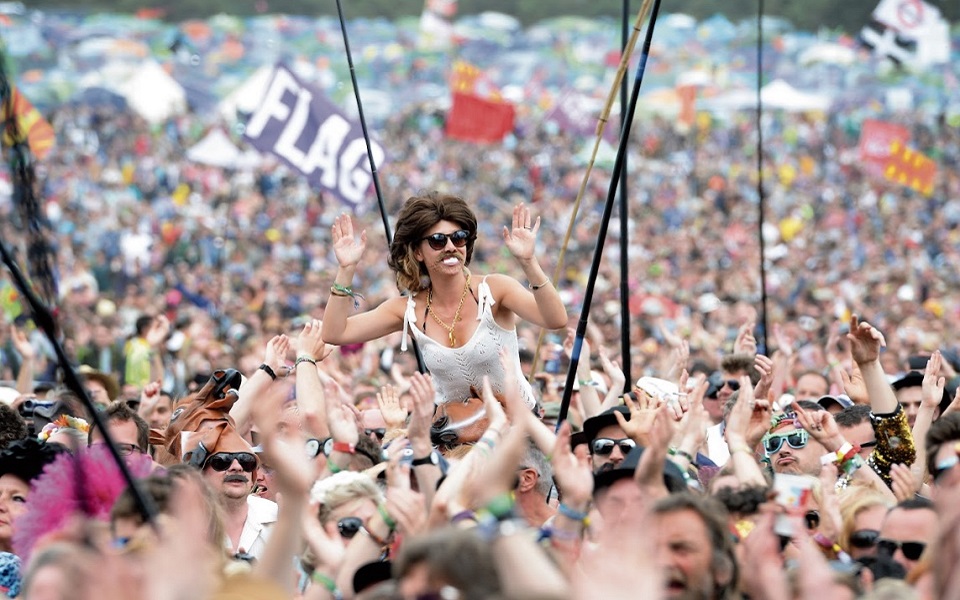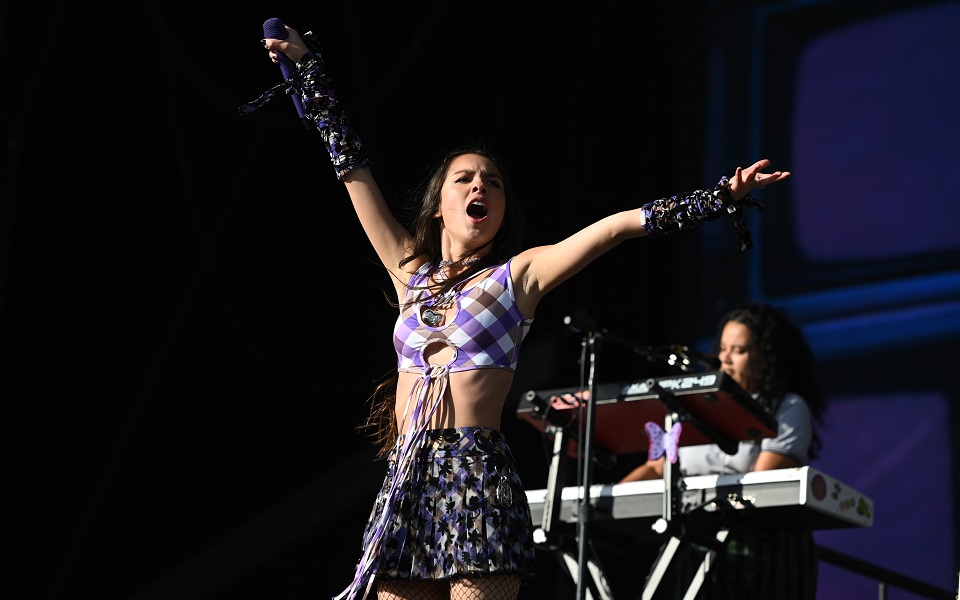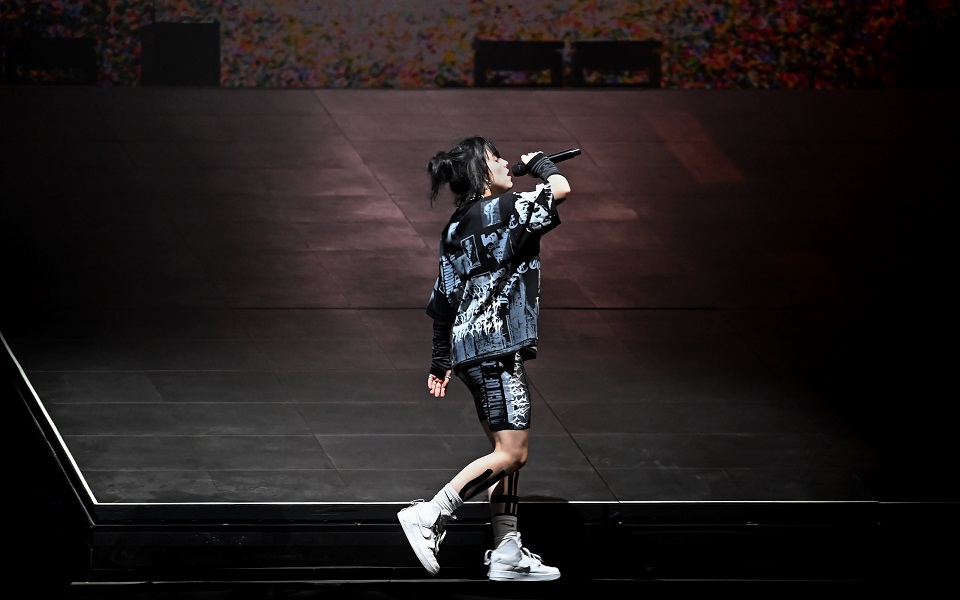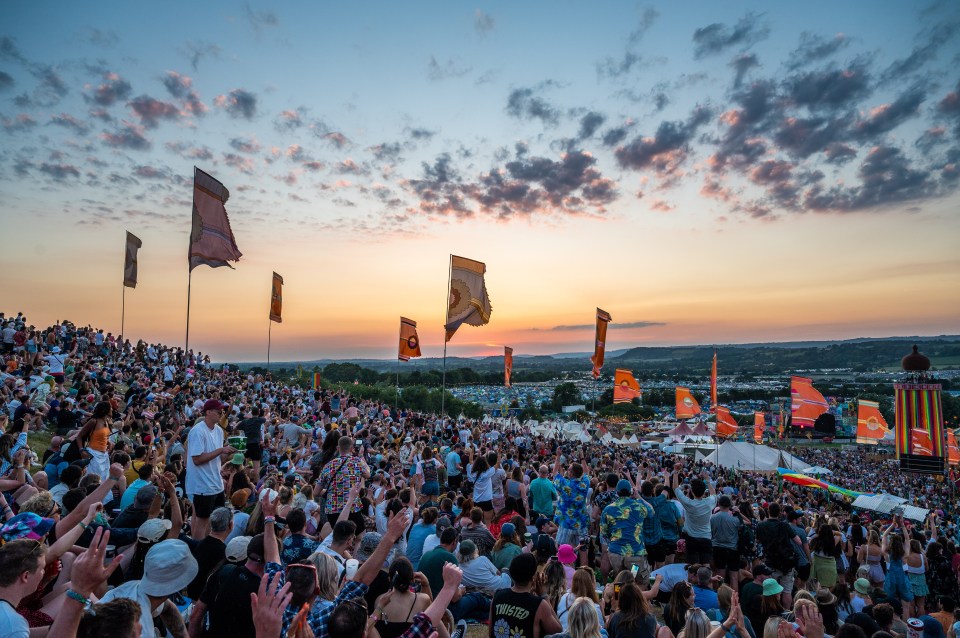Glastonbury 2022: Protest and celebration as festival roars back

It’s been an anxious three years for Glastonbury, but this weekend the most important and influential of the UK’s music festivals, and one of the most essential stages in the world, returned for the first time since 2019.
Did it rain? Of course it did – but only a little bit. Late afternoon crowds on Friday waited patiently for the sky to bear its goods, but when it did, it was only the odd fifteen-minute burst – the weather gods more or less gave punters a free pass.
Most had been pitched up since Wednesday night to avoid train strikes, and on Thursday the site was swelling with enough people to cram the huge A-road sized walking thoroughfares between stages before the main line-up had even begun.

On Thursday in the Theatre and Circus fields, festival-goers were snapped by wandering teams of paparazzi yelling “Prince Charlotte” at girls with their mothers and “Sam Fender” at any bloke with a short back and sides. Two frozen mountaineers with USA flags slowly climbed towards their summit, Boris Johnson wandered by, and so did Priti Patel, touting “cheap package holidays to Rwanda.”
These fields, where up to 90 roaming theatre performers can be enjoyed along with a pint, can get overlooked – but they are the festival’s most uplifting place to hangout, especially before the main stage properly plugs in.
By Friday artists on the main stages remembered that the DNA of Glastonbury is rebellion, and that this version of having a good time comes hand in hand with thinking more about how we can be better people.

“Women and children are going to die,” cried out 19-year-old Olivia Rodrigo, one of America’s boldest new pop imports, in the late afternoon sun on Saturday. She was responding to the Supreme Court’s decision to overturn legal abortion for women. She introduced Lily Allen, and the duo bounced around singing her provocative hit ‘Fuck You’ with tens of thousands in the audience raising their middle fingers at the Supreme Court.
“Youngest ever headliner, yeah!” declared Billie Eilish, the emo-pop songstress just into her 20th year who headlined the Pyramid Stage – the festival’s biggest – on Friday night. Hers was a set of slow-burning winners, including her big hit Bad Guy, but also of more niche vocal-led tracks which burnt with sincerity.
For some, her set may have required too much attention, but others appreciated the reverby joy of tracks like Ocean Eyes. Wearing a baggy jumper, any doubts about her back catalogue being extensive enough for a headline set were sidelined by her passion and energy.

If two-and-a-half hours sounded long to stand and watch Paul McCartney, that time evaporated faster than Friday’s rain. McCartney clearly felt short-changed by the run time: roaring on close to midnight, he went on half an hour on top of his set time. His show, which came a week after his 80th birthday, was a masterclass in nostalgia.
There were no ‘happy birthdays’ from the brass band ensemble, rather an examination of his Beatles backlog with special guests Dave Grohl and Bruce Springsteen. “Every time I play The Beatles the sky lights up with cameras, but I’m gonna play this new one anyway,” he joked.
McCartney still releases plenty of new music and about a quarter of the set was dedicated to those songs, which aren’t all known, but with a full brass band and choral backing, he can turn any moment into a hair-raiser. Macca mostly sounds spot on; singing in vibrato, it’s an impressive feat to perform this naturally and energetically at 80, springing from guitar to piano, nudging the keys as he walks past to add a little something to the cacophony.

He seemed delighted – as were we – when he explained that new technology has allowed him to bring John Lennon back. “Say ‘we love you John,’ say, ‘We love you George,” he said to the obedient crowd. In a totally surreal moment, Lennon’s voice blurted from the monitors during I’ve Got A Feeling, his crisp image displayed on the big screens.
McCartney revealed the idea was Peter Jackson’s, who worked recently on the Beatles documentary Get Back. During the set, which included a dramatic fireworks-strewn performance of Live and Let Die as well as Hey Jude, Love Me Do and Can’t Buy Me Love, there was also a shoutout to George Harrison, but curiously no mention of the one other surviving member, Ringo Starr, and rumours of his surprise appearance ended up being just that.
“Back in the day we never said, ‘I love you, man,'” McCartney said pertinently, praising today’s approach to mental health. It showed how his relevance today springs from more than just his music.
Bearing a Ukrainian flag as he returned for an encore, McCartney represented the other major mood at Glastonbury: anger at Russia’s war in Ukraine. Across the crowds on all of the diverse stages, Ukrainian face paint was common, and the nation’s flags hung soberly from tents. The feeling of protest is no less strong after hours, when following the headline sets, crowds patiently swig from vodka mixers they’d whipped up in their tent as they make the half-hour trudge through thick crowds to the South East Corner, a labyrinth of brightly-coloured set pieces where DJs play until 6am.

For those still standing as the sun rises, crowds head up the hill, either to The Park or the Stone Circle to fulfil the Glastonbury bucket list activity of watching the sun rise, perhaps with new friendships that formed over the weekend. At The Park, there are the best views, where the gently rolling hills of the site can be best enjoyed and where the soft, curvaceous edges of tents are punctuated by kilometres of lighting.
From here, look in any direction and all you can see is the festival, which is so big that it has to apply for a ‘small town’ licence rather than an event licence.
Talking of big, the largest crowd ever recorded was for Kylie’s ‘legend’ slot in 2019, when an estimated 100,000 sang ‘I’m spinning around’ in the mid afternoon Sunday sun. This time it was Diana Ross, who, proudly declaring her age at 78, looked sensational in a silver floor-length ball gown.
Like for Kylie, the crowd was too big to fit in the Pyramid Stage, although the performance and vibe was a little more sedate, and Ross’ voice isn’t as stable as it once was. But sauntering on to I’m Coming Out and tearing through Upside Down, Chain Reaction and Baby Love, she pointed to a theme of nostalgia begun by McCartney on the same stage the night before. Oh, and the sun shined.
We’ve all changed in the three years since Stormzy headlined. But the power of his protest set from 2019 feels relevant still, and in these worrying times, Glastonbury feels like a constant. Whether watching from site or at home on TV, Glastonbury’s role in bringing us all together feels more vital than ever. Welcome back.
Glastonbury 2022 headline sets, theatre and circus sets and much more is available here on iPlayer
